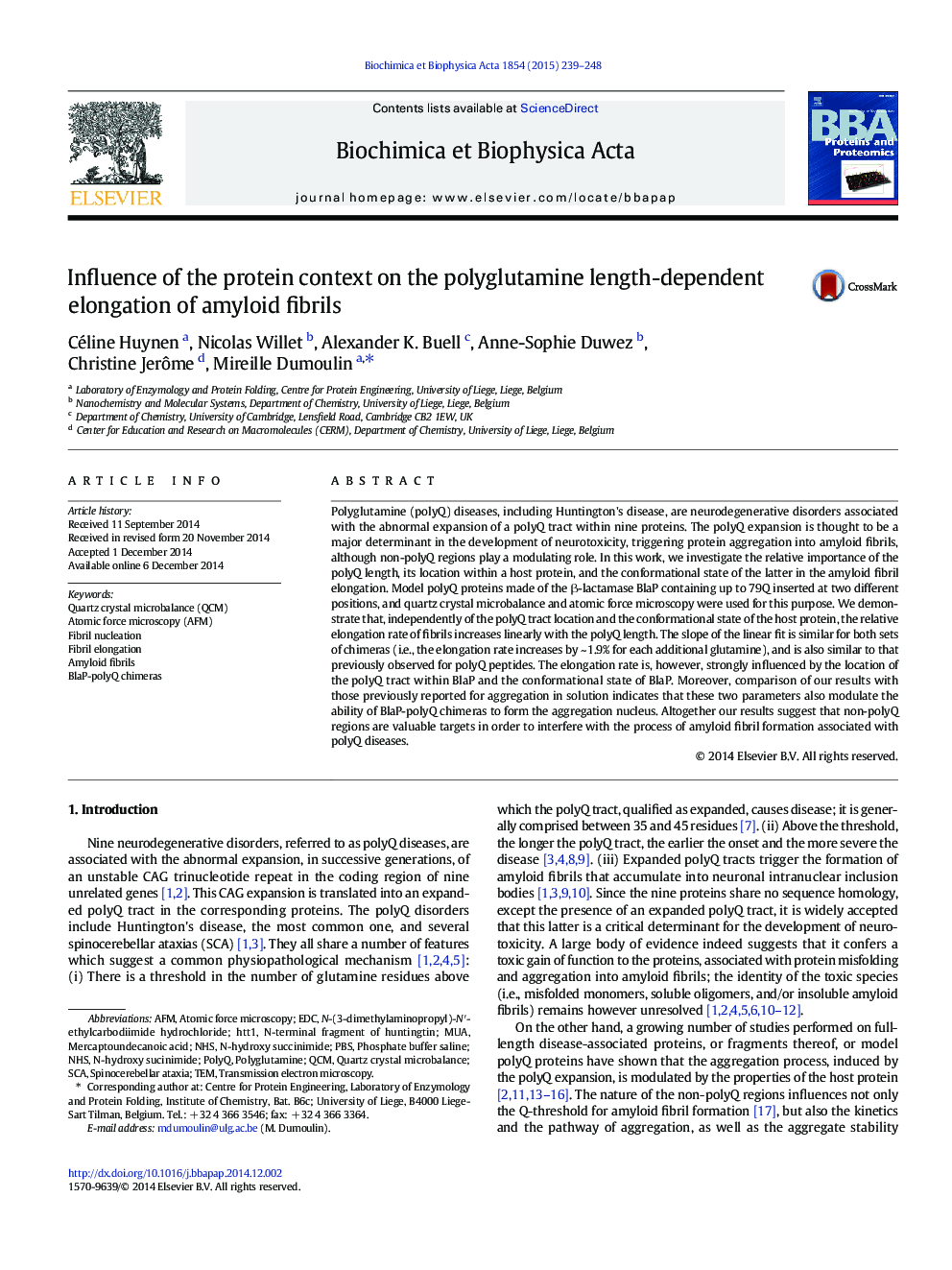| کد مقاله | کد نشریه | سال انتشار | مقاله انگلیسی | نسخه تمام متن |
|---|---|---|---|---|
| 1177760 | 962583 | 2015 | 10 صفحه PDF | دانلود رایگان |

• The elongation rate linearly increases with the Q-number whatever the protein context.
• The elongation rate of fibrils is affected by the location of the polyQ tract.
• The elongation rate of fibrils is affected by the conformation of non-polyQ regions.
• Non-polyQ regions constitute valuable specific therapeutic targets of polyQ diseases.
Polyglutamine (polyQ) diseases, including Huntington's disease, are neurodegenerative disorders associated with the abnormal expansion of a polyQ tract within nine proteins. The polyQ expansion is thought to be a major determinant in the development of neurotoxicity, triggering protein aggregation into amyloid fibrils, although non-polyQ regions play a modulating role. In this work, we investigate the relative importance of the polyQ length, its location within a host protein, and the conformational state of the latter in the amyloid fibril elongation. Model polyQ proteins made of the β-lactamase BlaP containing up to 79Q inserted at two different positions, and quartz crystal microbalance and atomic force microscopy were used for this purpose. We demonstrate that, independently of the polyQ tract location and the conformational state of the host protein, the relative elongation rate of fibrils increases linearly with the polyQ length. The slope of the linear fit is similar for both sets of chimeras (i.e., the elongation rate increases by ~ 1.9% for each additional glutamine), and is also similar to that previously observed for polyQ peptides. The elongation rate is, however, strongly influenced by the location of the polyQ tract within BlaP and the conformational state of BlaP. Moreover, comparison of our results with those previously reported for aggregation in solution indicates that these two parameters also modulate the ability of BlaP-polyQ chimeras to form the aggregation nucleus. Altogether our results suggest that non-polyQ regions are valuable targets in order to interfere with the process of amyloid fibril formation associated with polyQ diseases.
Journal: Biochimica et Biophysica Acta (BBA) - Proteins and Proteomics - Volume 1854, Issue 3, March 2015, Pages 239–248